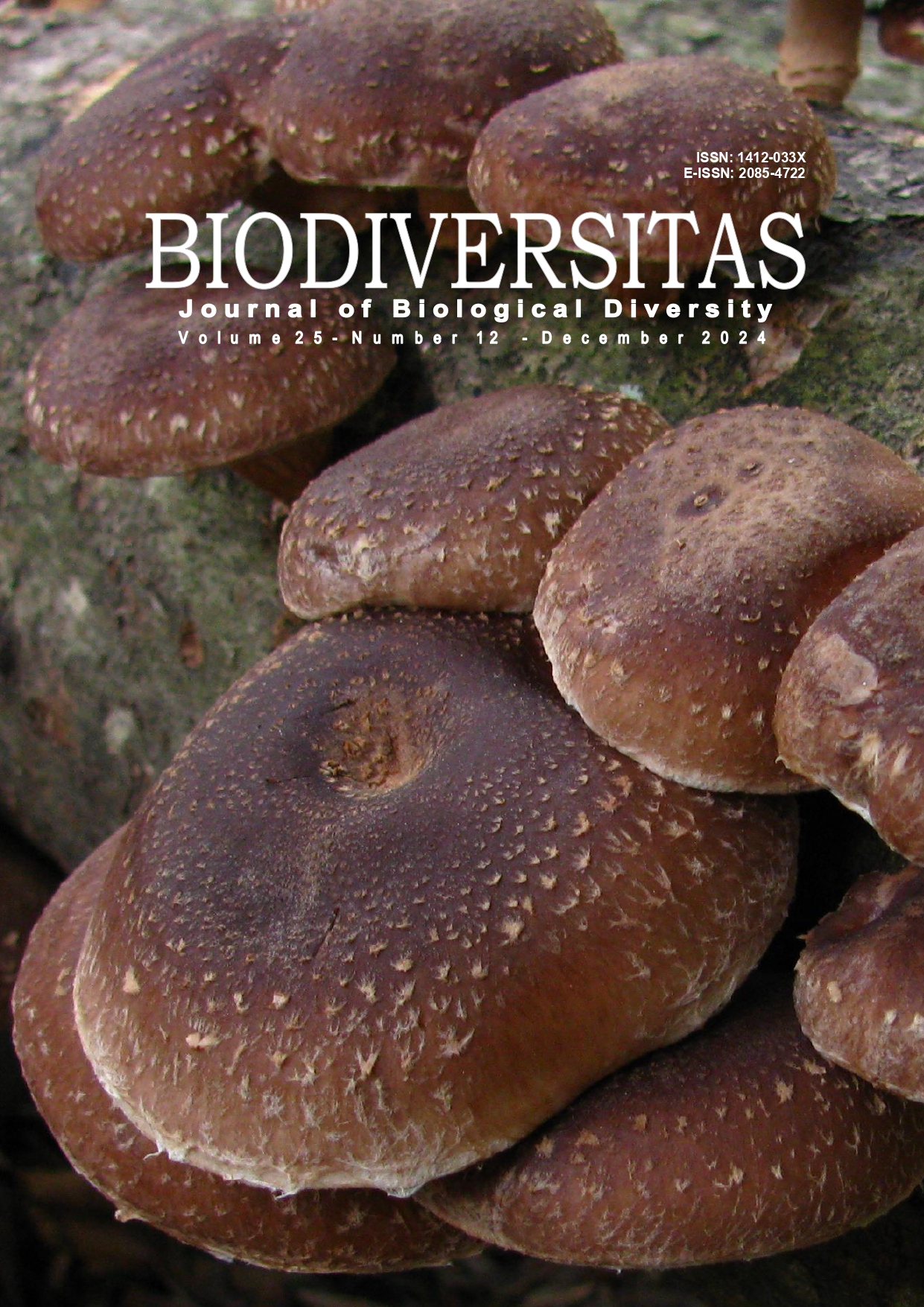Weed species in plant communities as indicators of degradation of vegetation cover and fertile soil layer in desert regions
##plugins.themes.bootstrap3.article.main##
Abstract
Abstract. Osmonali B, Tokbergenova A, Taukebayev O, Zulpykharov K, Salmurzauly R, Smanov Z, Ussen S. 2024. Weed species in plant communities as indicators of degradation of vegetation cover and fertile soil layer in desert regions. Biodiversitas 25: 4930-4938. The geographical position of Kazakhstan on the continent of Eurasia determines its special role in solving problems of conservation of biodiversity of natural biological and land resources. One of the numerous factors of anthropogenic desertification is overgrazing. Under long-term unsystematic grazing, fodder lands of sandy massifs are more exposed to various types of soil deflation and vegetation changes. In desert regions, weeds can be an important indicator of degradation of vegetation cover and fertile soil layer. Some weed species may indicate soil moisture deficiency, salt degradation or lack of fertile substances. The purpose of our work is to identify soil changes, depending on the dominance of weed species and the degree of disturbance. On the example of the following weed species: Peganum harmala, Pseudosophora alopecuroides, Alhagi pseudalhagi, Suaeda linifolia, Karelinia caspia. Suaeda linifolia and K. caspia are indicator plants of salinisation by toxic salts. The study of weed species in desert regions can help to determine the level of degradation of soil and vegetation cover and to develop measures for their restoration and improvement. The study of weed species in plant communities of desert regions can help to determine the degree of degradation of vegetation cover and fertile soil layer, as well as to develop measures for their restoration and protection. Peganum harmala and A. pseudalhagi are indicators of overgrazing and degradation of vegetation cover. Pseudosophora alopecuroides, also known as indicator shrub, is a plant species that is often used as an indicator of land cover degradation. This species typically grows on soils with low nutrient content and can tolerate dry and unfavourable conditions. Thus, observing the presence of P. alopecuroides in a particular area can be a useful indicator to determine the level of vegetation degradation and the need for measures to restore and protect soil and vegetation.

